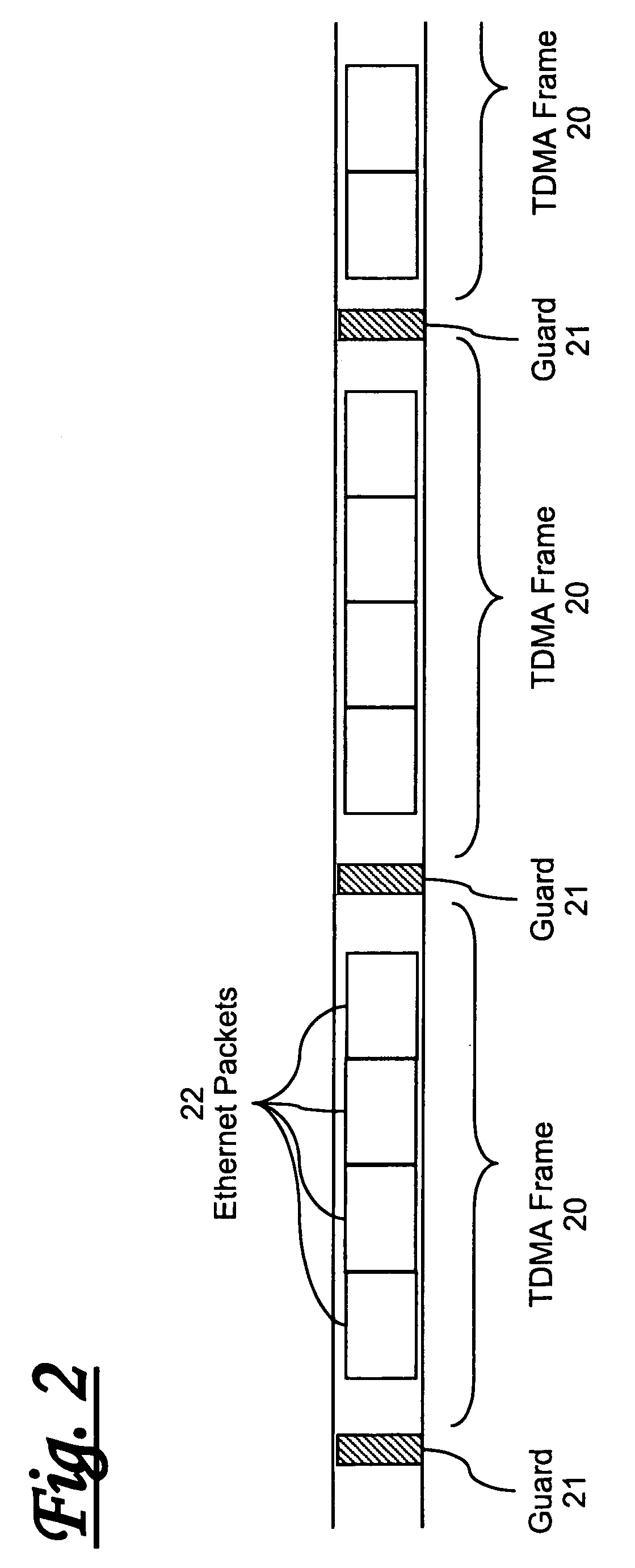Point to multipoint network
a multi-point network and point-to-multi-point technology, applied in the field of point-to-multi-point networks, can solve the problems of increasing complexity, custom-designed integrated circuits are required, and the ranging process is considerable in complexity, and achieves the effect of shortening the time to market and cost-effective infrastructur
- Summary
- Abstract
- Description
- Claims
- Application Information
AI Technical Summary
Benefits of technology
Problems solved by technology
Method used
Image
Examples
Embodiment Construction
[0043]Referring to FIG. 1, there is shown an optical network arrangement comprising a head-end station 10 and, multiple subscriber stations 11–14 connected by a passive optical network 15.
[0044]The system is arranged to provide an improved form of multiple access passive optical network, not based on small packets and ranging to achieve efficiency, but rather using variable sized (e.g. Ethernet) packets each able to carry IP traffic directly without segmentation.
[0045]The head-end station 10 comprises medium access logic 101 interfacing via a TDMA framing and sychronisation module 102 to optical transmitter 103, optical receiver 104, and hence to a wavelength multiplexer 105 which provides the physical interface to the optical network 15.
[0046]Each outstation 11–14 has a corresponding structure comprising medium access logic 111 connected via the TDMA framing and sychronisation module 112 to an optical transmitter 113 and optical receiver 114 and hence to a wavelength multiplexer 11...
PUM
 Login to View More
Login to View More Abstract
Description
Claims
Application Information
 Login to View More
Login to View More - R&D
- Intellectual Property
- Life Sciences
- Materials
- Tech Scout
- Unparalleled Data Quality
- Higher Quality Content
- 60% Fewer Hallucinations
Browse by: Latest US Patents, China's latest patents, Technical Efficacy Thesaurus, Application Domain, Technology Topic, Popular Technical Reports.
© 2025 PatSnap. All rights reserved.Legal|Privacy policy|Modern Slavery Act Transparency Statement|Sitemap|About US| Contact US: help@patsnap.com



